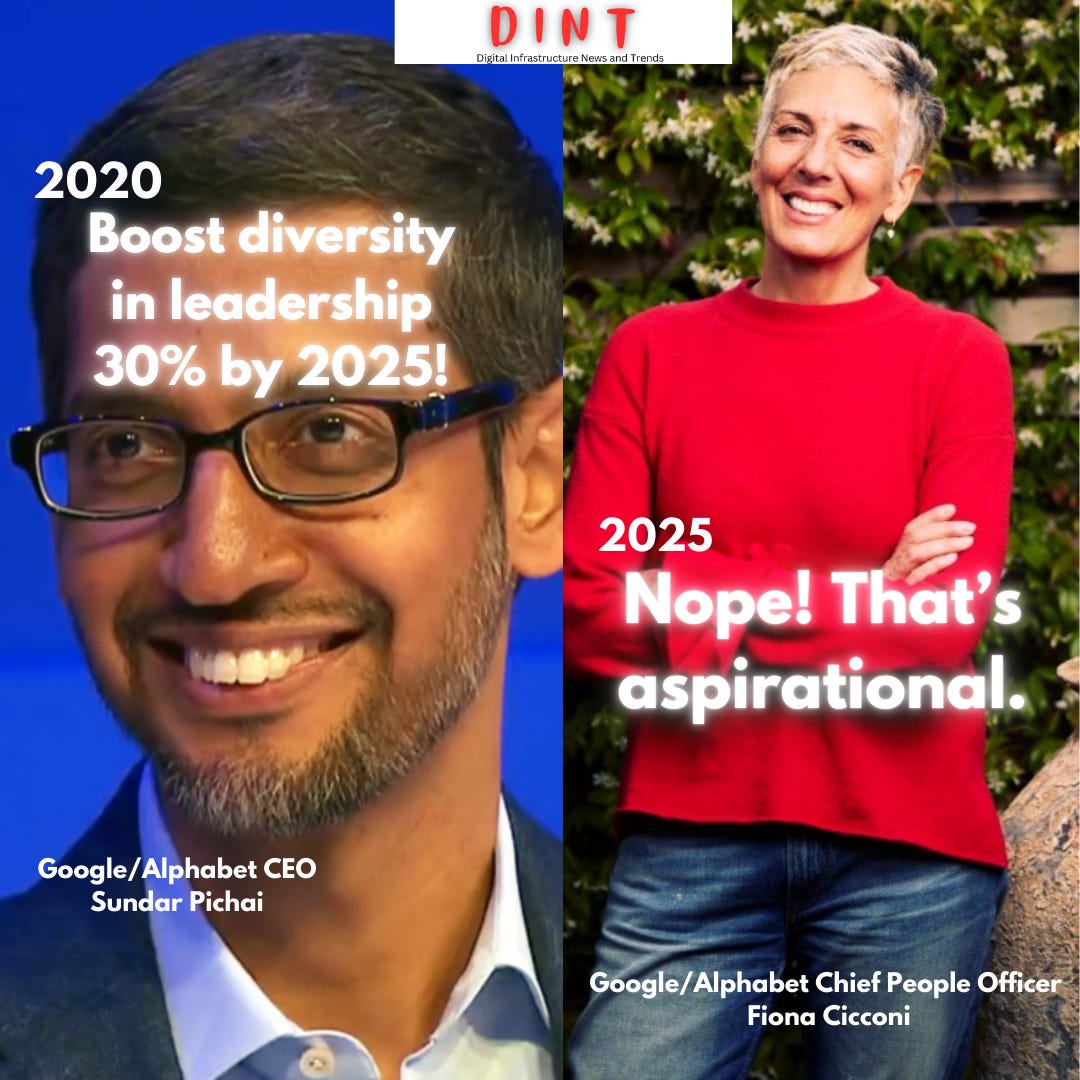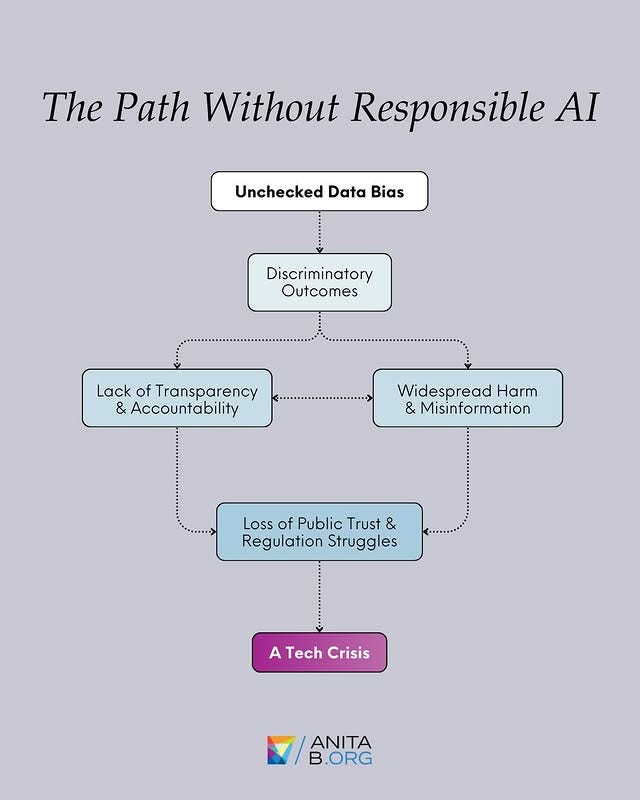This Week in Tech, Race, and Gender - DINT 141
A review of Google’s shameless 180 on its diversity goals
Tech diversity at a crossroads - no one can hide in this climate. It’s clear who’s dedicated and who’s faking dedication to diversifying workplaces
Out of the world’s top tech companies, only two remain committed to promises made during the post-George Floyd-murder era: Microsoft and Netflix.
You remember the world after May 2020.
Corporations tripped over themselves to make statements against racism.
Firms vowed to be more inclusive.
Executives had listening sessions (many of them even cried).
Employees were encouraged to talk about their experiences around diversity, and heal.
Today, just five years later, the climate is much different.
The same U.S. president is in office. But this president’s second administration launched an all-out assault on diversity programs, in the private sector and in government.
Today we stand at a crossroads. The immediate landscape appears bleak. But as the church mother said from the front pew, “Trouble don’t last always.”
This month, the company with one of the worst diversity records again reverses course on its stated diversity goals.
Last Wednesday, Feb. 5, Google announced it would no longer measure hiring targets with diversity metrics.
Its Chief People Officer Fiona Cicconi wrote a memo to employees at Alphabet, Google’s parent company, in which she stated that Google is committed to “creating a workplace where we hire the best people wherever we operate …”
Who determines who the best people are?
Even during the height of the racial awareness renaissance, Google struggled to answer that question.
Here’s an excerpt from our coverage of Google’s treatment of Black and Brown women in the workplace:
September 11, 2020
Google fires HBCU-focused Diversity Recruiter April Curley.
December 3, 2020
Google fires Artificial Intelligence researcher Timnit Gebru.
David Baker, a former director of engineering at Google’s trust and safety group who resigned in protest of Dr. Gebru’s dismissal, said Google should admit that it had made a mistake instead of trying to save face.
“Google’s lack of courage with its diversity problem is ultimately what evaporated my passion for the job,” said Mr. Baker, who worked at the company for 16 years. “The more secure Google has become financially, the more risk averse it has become.” (New York Times / Daisuke Wakabayashi)
Check out the full story here:
These actions came after Google pledged its commitment to improving Black_ representation at senior levels of the organization.
They also committed to boost representation of underrepresented groups among its leadership ranks by 2025.
That word commitment keeps coming up. For some companies, it's used as a smokescreen. Here’s our recent coverage of the ‘commitment’ issue at tech firms:
Maybe the person who said Google no longer has aspirational goals can explain to us who determines who the best people are and how Google will ensure fairness and remove bias in its hiring practices, Fiona Cicconi.
Humans have a natural affinity towards people who outwardly present as similar to them and those who also have similar interests and backgrounds. How will Google address this so that the company actually does hire the best people for the role.
If several candidates have similar qualifications, who gets the job?
An excerpt from Cicconi’s memo to Google employees, which was unearthed by the Wall Street Journal and later reported on by the New York Times.
"In 2020, we set aspirational hiring goals and focused on growing our offices outside California and New York to improve representation," Cicconi wrote.
“We’ll continue to invest in states across the U.S.—and in many countries globally—but in the future we will no longer have aspirational goals,” the email memo continued.
Aspirational goal or SMART goal?
Google’s goal of increasing leadership representation within five years by 30% for underrepresented groups seemed pretty concrete and clear. Some would say it fits the criteria of a SMART (specific, measurable, achievable, relevant, and time-bound) goal.
Specific: Increase representation of underrepresented talent
Measurable: by 30%
Attainable: Of course.
Relevant: In light of the tech industry’s abysmal hiring practices, yes, very relevant.
Time-bound: by 2025
Aspirational gives the air of flightiness and whimsy. Google made these commitments during a sober time in our world when each person reflected on race and how it affects our everyday lives.
That reflection had a short life, to be sure and Google shows no signs of caring about its credibility in light of the complete 180 on its stated goals.













Thank you for sharing Lisa